Van Life in Winter: How to Be a Happy Snowbird
A snowbird is a term used for those who escape to warmer weather during their normal winter. It's a popular practice among van lifers to head south for the winter. I've only managed to take shorter trips away from my Canadian winters. Perri and Dan from Crazy Brave Adventure have lived this style of nomadism to the fullest. I've decided to call on their expertise for this post about snowbirding in your van in the winter.
To see more of their content, check out their blog:
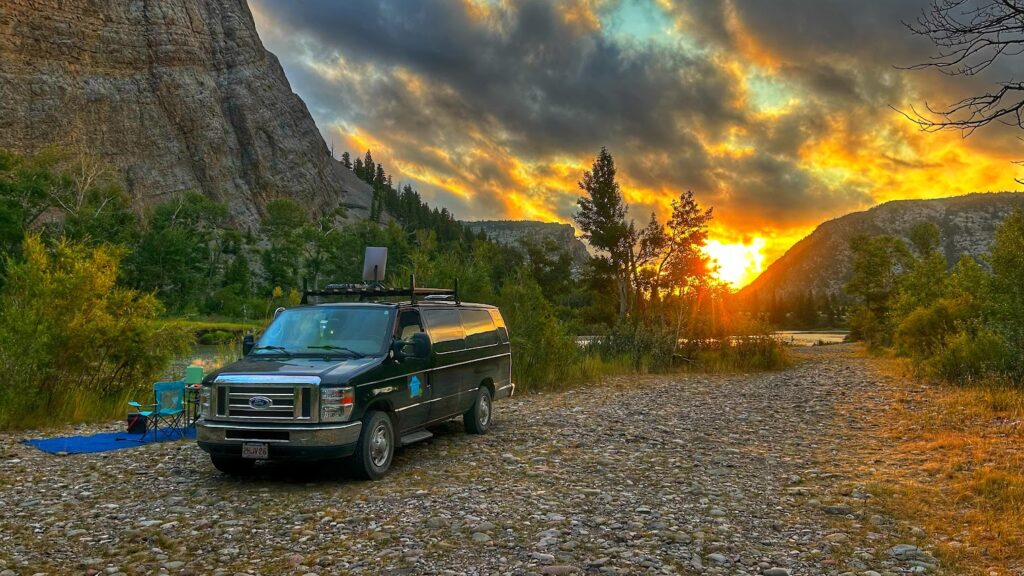
Our plan was to be snowbirds. Living in a van in winter weather was not ever the idea. 25 years of New England winters seemed like enough to us. Also, we’d found this nifty map making the rounds on the interwebs and figured we’d stay warm all winter following near-perfect 70 degree weather around the country.
After our September start date, we headed west. We planned a loose itinerary. We were going to hang out in the canyons of Utah as long as possible, then scoot south to be desert rats Arizona and New Mexico before the weather turned. Then we’d be Texas beach bums, and finally, Florida snowbirds. Sunny days all the way!
Well, it didn’t work out exactly as we had planned. October weather is unpredictable. We were living the dream, parked up on a dramatic, sunny canyon overlook waaay off the pavement in central Utah when the weather caught up with us. A winter storm was forecast. We had to scoot– and fast! Unfortunately, the 30 mile long dirt road out was so rutted and washboard-y our escape was in slow motion. We watched the dark clouds gather to the west and slooooowly bumped along. We made it to blacktop, and to Torrey, Utah when the storm caught up to us.
In blizzard conditions, we holed up in a private campground while our van was buried. Those few days of snowy, 18 degree temperatures in our lightly insulated low-top van taught us a thing or two about how NOT to snowbird.
It’s been a year since that miserable snowstorm, and we have learned a few things about nomadic living. In this article, we’ll share some tips for staying warm while living the van life.
Watch the Weather
One key to van living in winter is knowing what to expect when. Nobody wants to be taken by surprise by a sudden snowstorm– or any other kind of storm– on the road. We recommend using at least one weather app. (Our go-to is Clime, NOAA’s weather app, but there are many to choose from)
With our app, we get accurate information about impending snow and rain– even tornado warnings! These things are not fun. But with weather, it is definitely better to know what’s coming.
When planning to camp remotely, always double check the weather when you are in cell range. We recently planned to camp on a beach on the coast of Washington state, but a quick check using our app told us that it would be a stormy stay. The road down to the beach had signs of past flooding: no thank you! We headed inland.
Flexibility is Key
As with so many aspects of nomadic living, flexibility is key. If the weather shifts, you must shift with it. When people ask us where we are headed, our answer is usually a little vague. We have a general direction, a “bookend” stay with family or an event to attend. But often, we make our travel plans over breakfast. If the road ahead is sweltering or freezing, rainy or tornado-prone, we plan a different route.
Yes, there are times when reservations are more convenient, but there are at least as many times that being locked into a specific place is a real drag. When your home has wheels, you can move if you need to. That’s one of the best parts of van living– and the number one reason to be a snowbird to begin with. Below are a few ways to move to manage bad weather conditions.
Change Elevation This is especially useful in the heat. Even on the hottest days, campsites up in the mountains will be cooler. We use the “elevation trick” quite a bit in the desert. Shady, mountain campsites, especially near water, are wonderful when the valleys below are sweltering.
Town and Country If you can’t outrun it, plan to ride out nasty weather in a convenient spot. When we were faced with that blizzard in Utah, we hunkered down in a private, small town campground. Not our usual kind of spot, but it was terrific to have a nearby cafe to warm up in, a covered cooking area, hot water, even readily available hot cocoa! Similarly, when we were faced with tornado warnings in Tennessee, we headed for a hilly state park with on-site cinder block buildings for shelter (if needed). There are times it is most convenient to be out in the wilds and times when towns provide the amenities needed. The key is to flex as the situation needs.
Follow the Sun: This is the biggie. To stay warm in winter, plan to travel where it is warm, namely: South. When you’re enjoying T-shirt weather in January, you will thank yourself for it. We have found that some places are easier to snowbird in than others. We spent our first snowbirding months in Arizona, New Mexico and Texas, then traveled to Florida for the majority of the winter.
There are definite pros and cons to each of these places. While, I’ll go into the particulars of each spot below, generally, when you head south, you are looking for places with good infrastructure to support van life: access to reasonably priced camping options, water, laundry, and shopping nearby.
Where to Snowbird While Living in your Van in Winter
Some states are welcoming of snowbirds. They provide inexpensive LTVA (Long Term Visitor Areas) for nomadic folks. (LTVAs provide trash receptacles, water and porta potties and for a small fee, you can stay put there for months.) Some have large stretches of public land that allow for van-camping in many places. In these states, you’ll find large communities of snowbirds, and welcoming small towns, happy to have you around.
Some states are not as “van-friendly” or easy to navigate. On the west coast of Florida, where we spent the majority of our winter, parks closed at sundown, towns and beaches had “no camping” ordinances, even highway rest areas had a four hour time limit. We understand why a place like Florida might want to regulate camping; in the winter, they’d be swamped. But, Jeez! If you are planning to go to Florida, make sure you have a plan.
Snowbirding in Arizona
Arizona is a great choice for winter van living. There are many campgrounds that cater to seasonal campers and there are also many LTVA’s. The town of Quartzite is known as an inexpensive and social snowbird mecca in winter. Here, you can park in areas of like-minded folks and enjoy the winter in the desert. There are also many less well known BLM lands.
Arizona has many inexpensive water refill stations (just search “water near me” on Google maps), large, inexpensive laundromats, and beautiful parks. It is a snowbird mecca, and you will definitely meet others who are escaping the cold of northern winters.
While in Arizona, we found that some free areas were busy and social and some were quieter and more remote. All, however, were warm and starkly beautiful. We camped for free in Craggy Wash outside of Lake Havasu City, in Quartzite, in Yuma, and– our absolute favorite– in the KOFA wildlife refuge. We also slipped across the border to check out the public lands in the Cargo Muchacho range in California. These were just as accessible and snowbird friendly as the ones in Arizona.
In Arizona, there are endless desert vistas open to boondocking– either through the LTVA program or free with a 14 day stay limit. After your 14 days are up, you can switch locations and continue enjoying those sunny days.
But before you take off down those desert roads, make sure you have a solid vehicle with high clearance, a detailed map, and apps such as iOverlander that can point you in the right direction. In addition, US forest service ranger stations are treasure troves of useful boondocking information. Rangers tend to know the roads and areas better than anyone and they can help you find a site that matches your rig’s capabilities.
If you enjoy more services, there are many developed campgrounds that cater to snowbirds in Arizona. In addition, there are terrific National Parks and National Forests to visit. We really enjoyed the campgrounds in Organ Pipe Cactus National Monument, and Chiricahua National Monument, and the national forest outside of Tucson was a great cheap place to camp within 30 minutes of Tucson.
In addition, the town of Bisbee was welcoming of van campers. We were able to boondock in one of their city parking areas, close to bars, art galleries, restaurants and coffee shops. We also visited Hot Well Dunes BLM campground (free). This spot caters to the off-road crowd and has natural hot tubs– along with miles of sand dunes and desert vistas. If you are a rockhound, the Black Hills Rockhound Area Outside of Wilcox is another beautiful, free option. You might even find some fire agate while there!
Truly there are so many free or inexpensive snowbirding spots in Arizona. So much of the state is public land and available for camping. It’s hard NOT to find one that matches your needs. All are warm in winter, and happy to host snowbirds. Arizona is indeed a great place to spend the winter.
Snowbirding in New Mexico
New Mexico is not well known as a snowbirding spot, probably because it is not as reliably warm and sunny as its neighboring state, Arizona. However, there are some great things about wintering in New Mexico. We crossed the southern tier in winter and found a few wonderful spots to explore. They were definitely a bit more chilly though.
Las Cruces is a great town to snowbird in. There are easily accessible dispersed sites very close to town and many more spots out in the desert on all sides. We especially enjoyed camping in the beautiful Organ Mountains Desert Peaks National Monument which surrounds this town and has some amazing hiking opportunities.
It did get down in the low 30s (0 celsius) and below at night, and wind is a real issue along the I-10 corridor. The northern section of New Mexico, though sunny, can be cold for snowbirding. On the plus side, it is possible to buy a yearly New Mexico State Parks Camping Pass for $225 and spend the winter traveling between state parks.
Snowbirding in Texas
Unlike New Mexico and Arizona, Texas has virtually no public land. That doesn’t mean that it is a bad option for snowbirds. Texas has a huge stretch of beaches along its gulf coast, and many allow camping. Last winter, we explored some of these on our way east.
We started our boondocking adventure along the beaches on Padre Island National Seashore, which allows camping along a 60 mile stretch of beach from Corpus Christi to Brownsville. We’d planned to boondock on the beach at Padre Island, but got cold feet after stopping by the ranger station. The usually firm sand at the beach entrance was loose when we were there and people were getting stuck. If we are down that way again, we will certainly try it. The beach is beautiful– and warm! We ended up camping at Malaquite campground, which costs $14, with friendly hosts and easy access to a wide stretch of beach. Wild Camping on the beach at Padre Island is free with a park pass.
From Padre Island, we followed the Texas coast east, camping for free at Magnolia Beach and Crystal Beach, and paying for camping in a state park in Galveston. Free ferries connect all the barrier islands along the coast and there is lots of room to spread out on the hardpacked sand. There are so many free options along the Texas coast– all warm and accommodating of snowbirds. If you want to spend your winter on the beach, Texas is a great option for you.
Snowbirding in Florida
Florida is a van-living challenge. It is beautiful, sunny and warm, with miles of lovely beaches, amazing wildlife, and gorgeous rivers. But the coasts of Florida are built up and there is not much room for beach camping. In addition, the many lovely beaches and county parks close at sundown– and police take notice of vans and van-lifers. There are many many terrific state parks, with lovely campgrounds, but spots are reserved months in advance.
In short, if you are snowbirding in a van in Florida, plan ahead! Make some reservations at the gorgeous Florida State Parks and expect to spend at least some time in close quarters with others. The parks in this state are spectacularly beautiful, and we found we enjoyed our stays in them, despite the cost and crowds. But, because we hadn’t planned ahead, we had to haunt the reservation systems looking for cancellations and on the weekends, forget about it!
There are a few less expensive options for camping in Florida: Florida Fish and Wildlife Commission Lands (FWC) and Florida Water Management District Lands are free and available, but there is some bureaucracy involved in registering and reserving sites. And there is National Forest Land (mostly in North and Central Florida) with cheaper, less crowded campgrounds and boondocking options. In addition, some counties have campgrounds as well. We especially loved Fort Desoto Campground in St Petersburg. Each of these options requires a little preplanning and leg work. While wintering in Florida last year, we found we loved the wild interior but the quality of camping here really varied. Many campgrounds gave us access to beautiful, warm, wild places. None of them, aside from Fort Desoto, was on the beach.
If you are on a budget and set on snowbirding in Florida, you will likely have to do some stealth/urban camping. While in the sunshine state, we camped at fishing piers, rest areas, Cracker Barrel restaurants, and on the streets of smaller town centers. It is easy to blend in on the streets of Florida. There is so much, well, EVERYTHING there. But our van is not designed for stealth and we found it was not the most relaxing way to spend the winter.
Another option is to book a place in a Florida RV park for the winter. Often, these parks are close to the water and they cater to the needs of snowbirds. They are not for those on a strict budget though. We were shocked at the nightly rates for RV parks in Pinellas County.
Prepare your van for Snowbirding
Van Build Considerations
Plan to follow the good weather? Great idea! But, as they say, expect the best, plan for the worst. In other words: There will be rain. There may even be (god forbid!) snow, scorching heat, the works, really. Best to prepare for that stuff. And a good time to start is when you’re building your van (or selecting a previously built van).
Insulation: Where insulation is concerned, we believe in a happy medium. If you insulate every square inch, your van will be warm in winter. But when the summer heat gets in (which it will) it will stay. Here’s what we did:
Floor & Roof: We are happy with our floor insulation, a 4 inch thick sheet of polyiso We lightly insulated the roof, too, adding a layer of Reflectix between the wood ceiling and the roof. (Remember to leave a gap with Reflectix. It only works if there’s an air pocket between it and the thing it is insulating. Cramming it between stuff doesn’t actually do much.)
Sides: We made Reflectix window covers backed in black fabric (Crucial as our van, Stevan, has MANY windows). And we also have a windshield screen that reflects heat. We did not insulate the sides much. This makes for a “3 season van”
Generally, our van is cooler than the temperature outside, but we need to park it in the shade and use our window covers to keep it that way. It is warm enough for happy vanning down to 30 or so degrees. In winter conditions, it’s bearable-ish, but it isn’t great. If you plan to stay warm in colder winter conditions consider insulating more.
Inside Space
No matter how much you enjoy the outdoors, there will be times you really need your van’s inside space to work. Imagine the worst weather situation you can: days of torrential rain, a snowstorm. Would you be okay hanging out inside if you needed to? This question is not hypothetical; it will happen. Design your van for the worst days.
For example, our front seat swivels to give us a little sitting room. And the bed has comfy, lounge-y pillows for exactly those kinds of days. A table/desk or workspace is another feature you might want to build in for those rough weather inside-forever days.
Fan Hot weather is not always your friend. It can be oppressive, especially if you have pets. If you want to be comfortable on the road, a ceiling fan is not optional. We use our Maxxair fan every single day. In addition, we have a 12v clip-on fan for extreme heat. It was a game changer when we were snowbirding in Florida last winter.
Weather-Related Gear
Now that you’ve built your van for three seasons, turn your attention to gear that will make snowbirding easy. Plan to manage extreme heat and some degree of winter cold. Those deserts will throw it all at you! Here are a few items that stretch our ability to enjoy the weather wherever we are.
Sunshade In the desert, we really enjoy our portable sunshade. Unlike an awning, it needs to be rigged, but that gives us more flexibility. We can set it up beside the van or between trees. In the desert, it makes midday much lovelier.
Tarp When it is really rainy, we appreciate our large, heavy-duty tarp. We rig it up over the side doors of our van doors and have extra living space. We have tie-downs, poles and bungies to keep it in place. Compared to a built-in awning, it is an inexpensive, trouble free option.
Awning An awning is a great solution as well, though a more permanent one. If you have one, remember to consider sun direction when parking your van. We have considered upgrading to a fixed awning but (so far) haven’t felt the need for it.
Screenhouse Bug season is for real! When we set out, we weren’t sure we’d use a screenhouse, so we bought a cheapish one. Turns out that it is great in buggy weather! We use it a lot in spring time… and in the upper midwest (Looking at you, Wisconsin!) In addition, a screenhouse gives you added living space in good weather. During weeklong stays in the desert, we used it like a living room. Makes being a snowbird a bit cushier, we think!
Bed Not just for tenting, our sleeping bags are crucial for van life! We bust out our washable, down bags when we expect cold weather. In addition, we typically keep a light comforter on our bed and have both jersey and cotton sheets, deployed according to the temperatures we are expecting
Clothing Make sure to pack as we would for a backpacking trip: with layers! We have cold weather clothes: puffy coats, long underwear, mittens, wool hats, washable wool long sleeve shirts and sweatshirts, wool socks and comfy fleece slippers. …And we have hot weather clothes: Bathing suits, t-shirts, sun hats and light weight long sleeve shirts. In addition, we have rain gear, sandals and waterproof hiking boots, even an umbrella. Sure, this gear takes up a bit of room, but with it, we are able to manage whatever weather the road throws our way– and (mostly) enjoy it!
Have a Great Winter!
Snowbirding in a van is a great way to spend a difficult season. Staying warm in winter is definitely easier when you head south. The states of the Southwest US, especially Arizona, cater to the needs of snowbirds with many free and cheap places to camp and endless, desert vistas. Texas is another good snowbirding option. And Florida, though more difficult to manage in a van, is a beautiful consistently warm place to spend the winter. Wherever you go, keep in mind that, the weather can throw you a couple of curve balls. If you are prepared for them, winter can be a great time to be on the road.


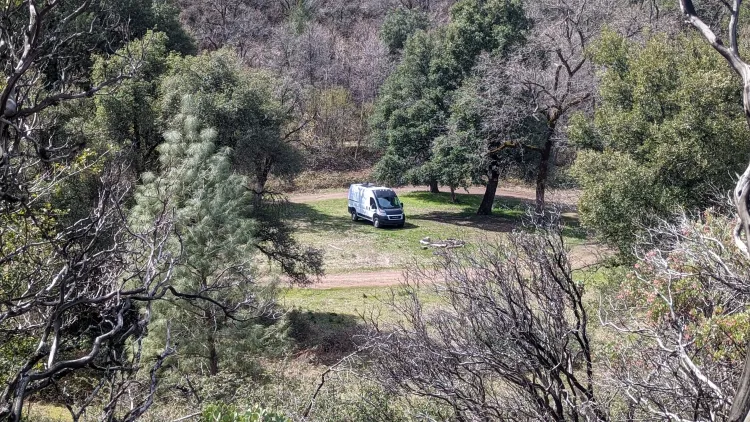
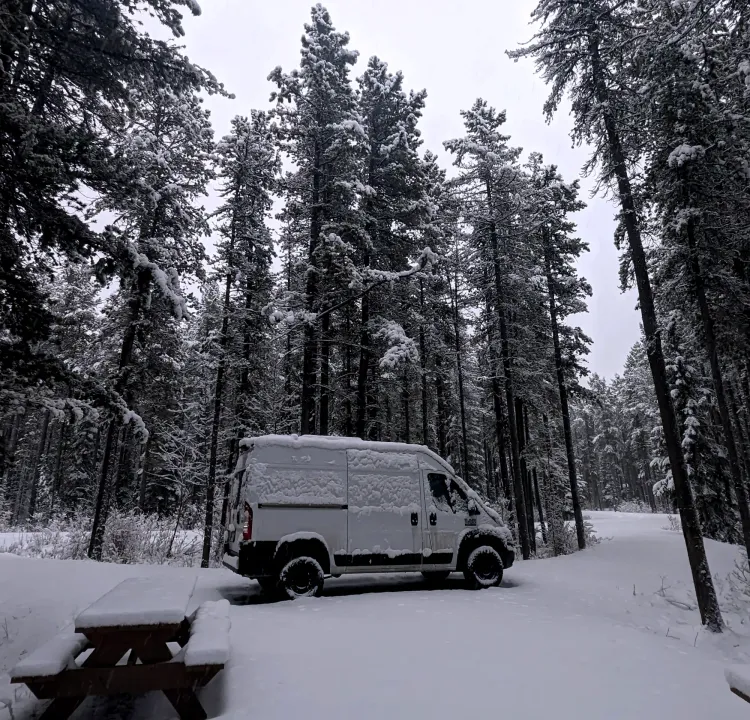
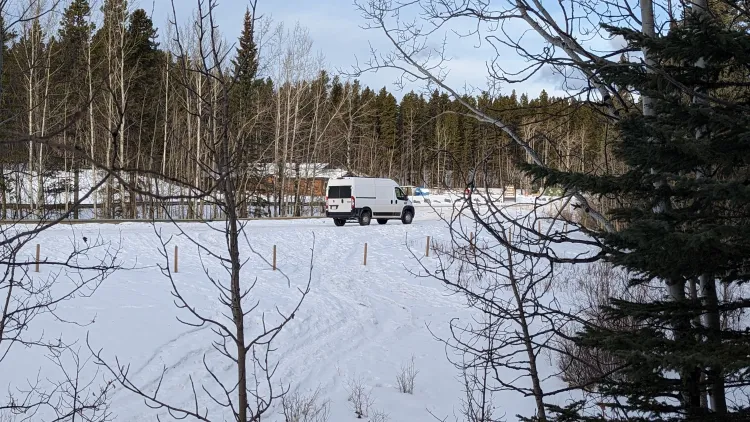

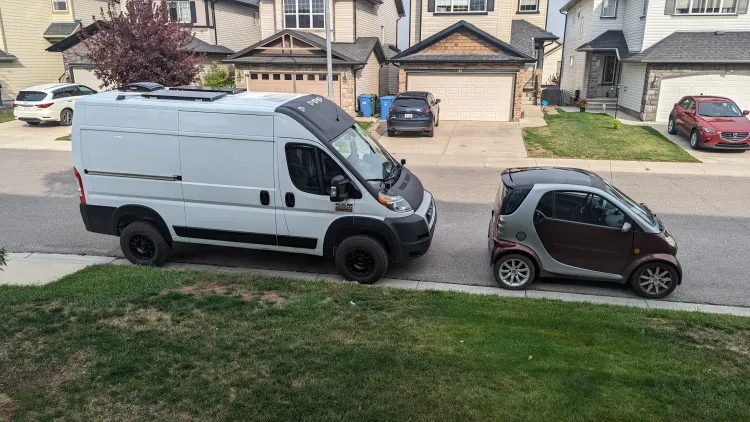
Member discussion